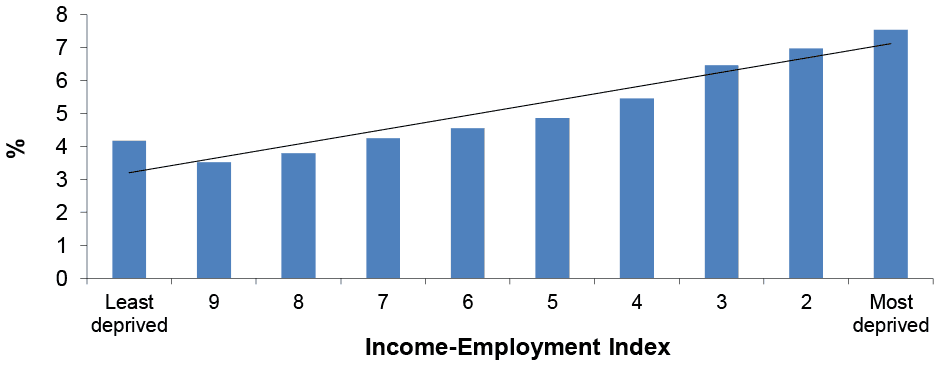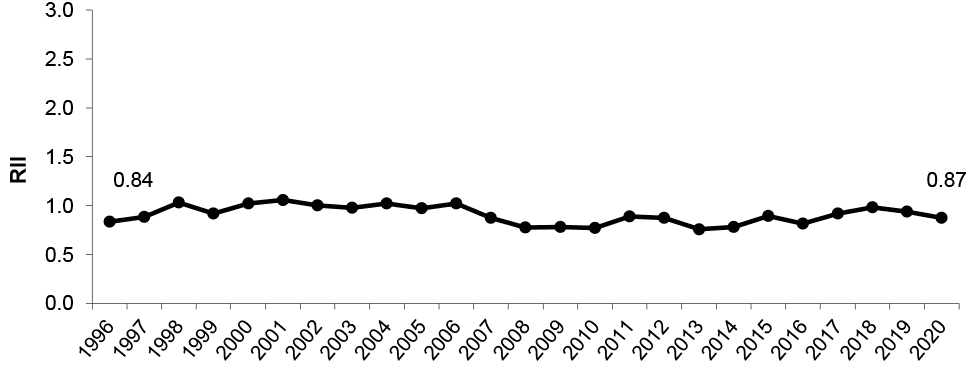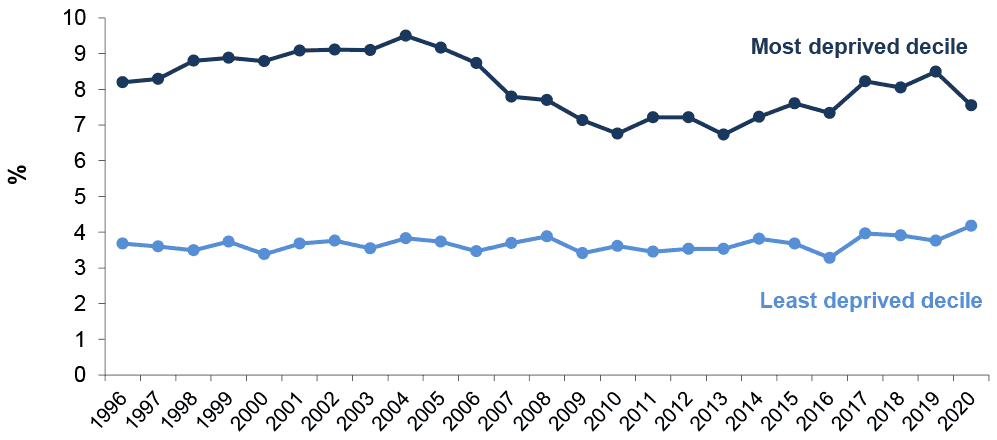Long-term monitoring of health inequalities: March 2022 report
Annual update of the long-term monitoring of health inequalities headline indicators.
Low Birthweight
Trends in low birthweight
Over 2,400 low birthweight babies were born in Scotland in 2020.
The percentage of babies born with a low birthweight has remained fairly stable across the time series, ranging from 5.0 – 6.0%.
| Year | Number of low birthweight babies1 | Target population size1 | % of live singleton births |
|---|---|---|---|
| 1996 | 3,066 | 55,861 | 5.5 |
| 1997 | 3,149 | 56,982 | 5.5 |
| 1998 | 3,108 | 55,152 | 5.6 |
| 1999 | 3,098 | 52,726 | 5.9 |
| 2000 | 2,906 | 51,057 | 5.7 |
| 2001 | 2,848 | 49,744 | 5.7 |
| 2002 | 2,910 | 48,950 | 5.9 |
| 2003 | 3,026 | 50,069 | 6.0 |
| 2004 | 3,030 | 51,807 | 5.8 |
| 2005 | 3,058 | 51,436 | 5.9 |
| 2006 | 2,939 | 52,467 | 5.6 |
| 2007 | 3,095 | 55,271 | 5.6 |
| 2008 | 3,134 | 56,925 | 5.5 |
| 2009 | 2,893 | 56,107 | 5.2 |
| 2010 | 2,816 | 56,123 | 5.0 |
| 2011 | 2,946 | 56,037 | 5.3 |
| 2012 | 2,775 | 55,369 | 5.0 |
| 2013 | 2,684 | 53,219 | 5.0 |
| 2014 | 2,773 | 54,398 | 5.1 |
| 2015 | 2,819 | 52,845 | 5.3 |
| 2016 | 2,762 | 52,424 | 5.3 |
| 2017 | 2,842 | 50,826 | 5.6 |
| 2018 | 2,690 | 49,254 | 5.5 |
| 2019 | 2,626 | 47,381 | 5.5 |
| 20202 | 2,429 | 45,456 | 5.3 |
1. This table includes records that could not be assigned an income employment decile and are therefore not included in the rest of the analysis.
2. 2020 data are provisional and may be updated in future reports.
Inequalities in low birthweight 2020
In 2020, 7.5% of live singleton births in the most deprived areas were recorded as low birthweight, this compared to 4.2% in the least deprived areas.

Trends in relative inequalities
Relative inequalities in low birthweight were higher in 2020 than those observed at the start of the time series (0.87 and 0.84 respectively). The RII values between 1997 and 2006 tended to be higher than those observed in the last decade.

Trends in absolute inequalities
The absolute gap in low birthweight between the most and least deprived areas in 2020 was 3.4 percentage points, the lowest it has been since 2013 (3.2 percentage points), and has reduced from 4.7 percentage points in 2019.
The narrowing and widening of the gap has tended to be driven by changes in the most deprived decile, as the least deprived decile has remained broadly stable since the beginning of the time series. However, the change between 2019 and 2020 was driven by both a reduction in the most deprived areas and an increase in the least deprived areas.

Contact
Email: morag.shepherd@gov.scot
There is a problem
Thanks for your feedback